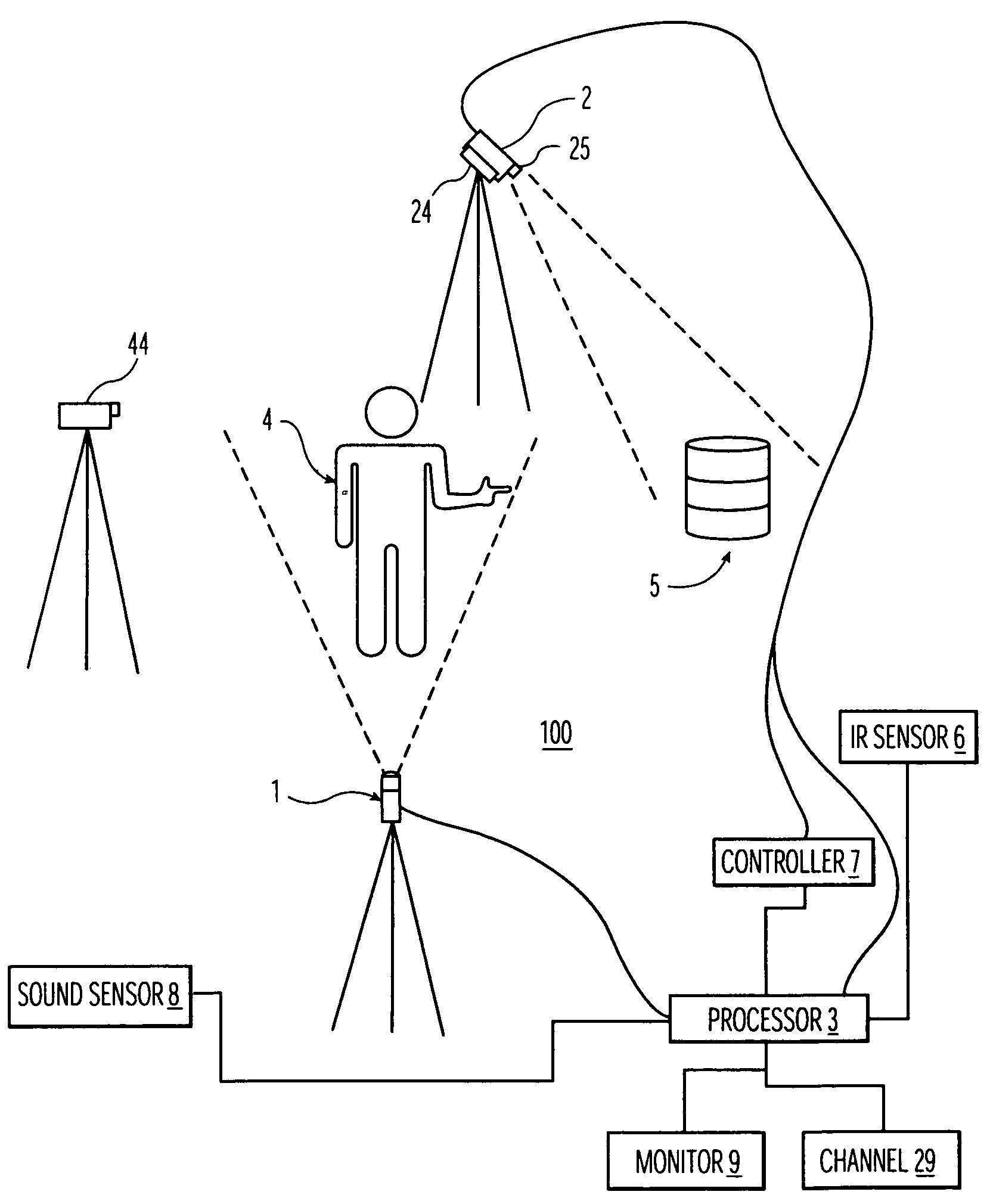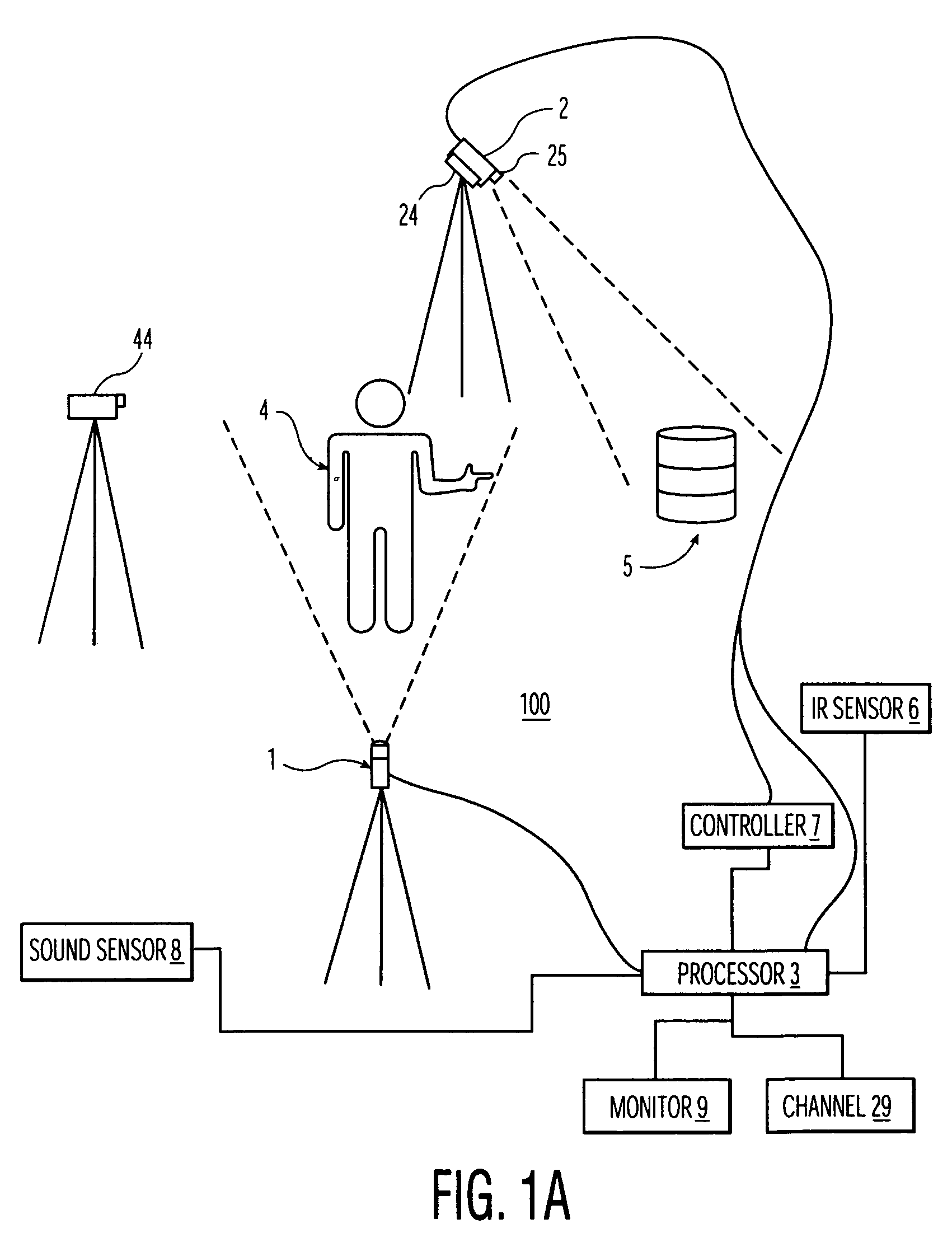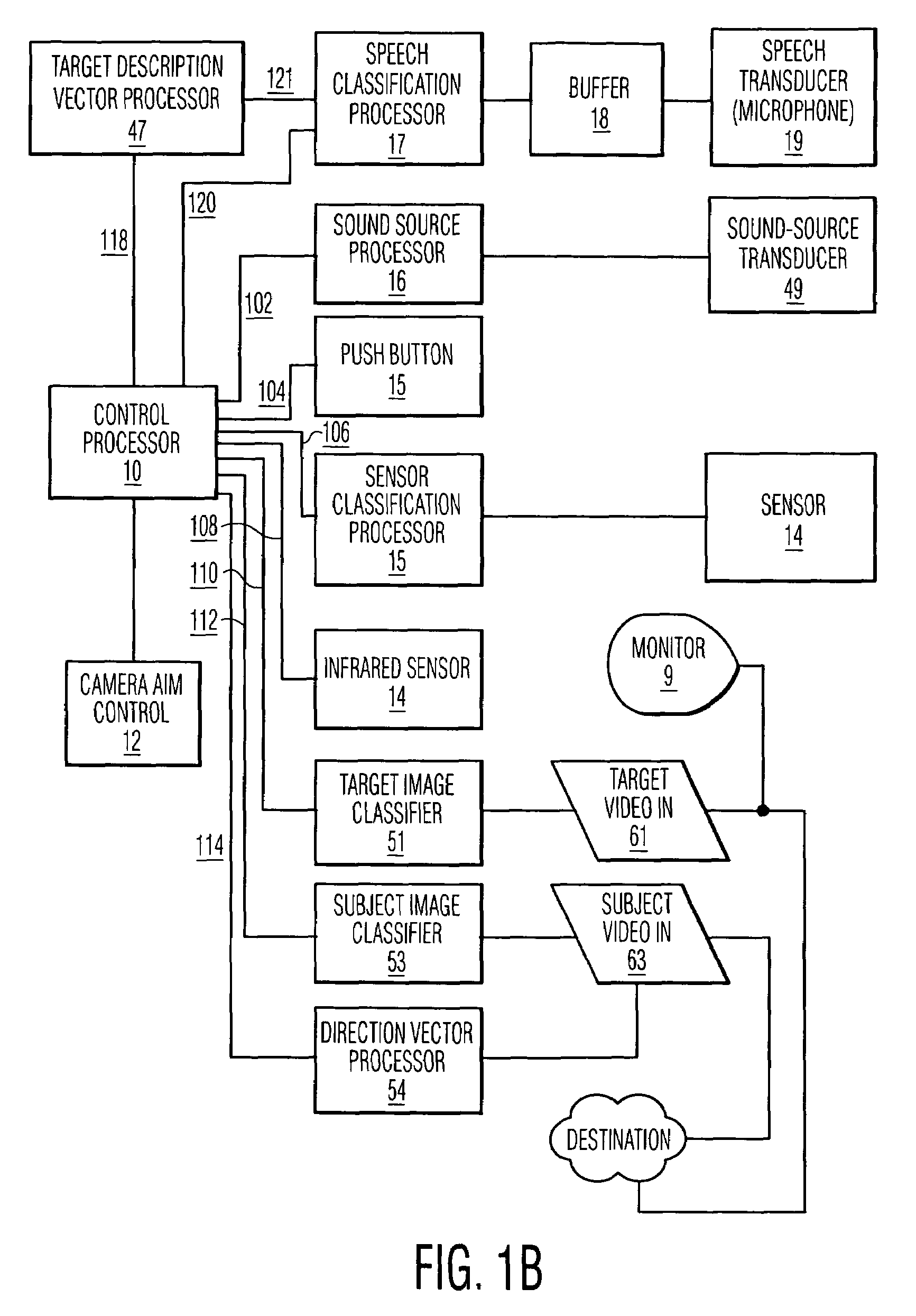Multi-modal video target acquisition and re-direction system and method
a target acquisition and multi-modal technology, applied in the field of video camera systems, can solve the problems of inability or flexibility to locate the target to be acquired and tracked, misdirection of the camera to an object or target, inherent ambiguity, etc., and achieve the effect of quick acquisition and improved ability to choose the correct obj
- Summary
- Abstract
- Description
- Claims
- Application Information
AI Technical Summary
Benefits of technology
Problems solved by technology
Method used
Image
Examples
Embodiment Construction
[0038]Referring now to FIG. 1A, according to one embodiment of the invention, a tracking video system is automatically controlled by a speaker 4. A subject camera 1 (and, possibly another subject camera 44 depending on the technology used for identifying a pointing trajectory, subject acquisition and targeting, etc.) and a target camera 2 are trained on the speaker 4 and a target object 5, respectively. In the current embodiment, the speaker's 4 gestures and voice are used to control the object camera 2 to aim it targets of interest. The object camera 2 is mounted on a swivel base 24, which allows panning and tilting or other movements. The target camera is also equipped with a zoom lens 25. Both the zoom lens 25 and the swivel base 24 are under the control of a processor 3.
[0039]The processor receives input about the gestures and speech of the speaker 4 via video signals from the subject camera 1 and a sound sensor 8, respectively. The processor classifies speech of the speaker 4 t...
PUM
 Login to View More
Login to View More Abstract
Description
Claims
Application Information
 Login to View More
Login to View More - R&D
- Intellectual Property
- Life Sciences
- Materials
- Tech Scout
- Unparalleled Data Quality
- Higher Quality Content
- 60% Fewer Hallucinations
Browse by: Latest US Patents, China's latest patents, Technical Efficacy Thesaurus, Application Domain, Technology Topic, Popular Technical Reports.
© 2025 PatSnap. All rights reserved.Legal|Privacy policy|Modern Slavery Act Transparency Statement|Sitemap|About US| Contact US: help@patsnap.com



